Renault has launched its Captur at Rs 9.99 lakh (ex-showroom, Delhi). The Captur is Renault's take on a premium small SUV, and is good-looking, comfortable and well-equipped for the discerning urban buyer. The Hyundai Creta and Jeep Compass are already entrenched in this segment, but Renault isn't dissuaded by that. The Captur is based on the same platform as the Duster – in fact, it uses the same powertrain too – but looks radically different, is more spacious and is better equipped. Does it, however, stack up well against its rivals? Find out here.
Design
The Renault Captur, unlike traditional SUVs, features a flowing design as opposed to a boxy one. Wrap-around headlights lead to a rising shoulder line that culminates way up top in a roof-mounted spoiler. SUV styling cues comes in the form of all-round body cladding, massive, flared wheel arches, muscular bumpers and high ground clearance. A contrast-coloured roof will be available as an option. The Captur is likely to come with either 16- or 17-inch wheels. This is the second-smallest car in this spec comparison following the Creta.
The Hyundai Creta, arguably one of the most successful small SUVs around, is boxier in its styling. Angular headlights and tail-lights, sharp, well-defined shoulder lines, all-round body cladding and roof rails impart the Creta with smart looks that have already proved popular with the populace. However, it is the smallest car here. It comes with 17-inch wheels.
The Compass is even boxier than the Creta, adhering to Jeep's grand styling tradition. It gets a seven-slot grille and squared wheel arches. The Compass’s body has fewer lines and fuss than its rivals, which suit those with more subtle tastes. The Compass comes with 17-inch wheels.
The Mahindra XUV500 is beefy looking, with lots of flowing lines, details and absolutely massive, flared wheel arches. Being a seven-seater, the XUV500 is considerably larger than the Captur, Creta and Compass, dwarfed only by the Hexa. The XUV500 comes with 17-inch wheels.
Finally, the Tata Hexa. Tata has tried hard to make the Hexa look as SUV-like as possible, using all-round body cladding, muscular and beefy bumpers, large wheel arches and roof rails, but there is no escaping that distinctly MUV body shape. The Hexa, nevertheless, looks clean and smart, and its length means it can seat seven in relative comfort. The base variants of the Hexa get 16-inch wheels, while the top spec comes with 19-inchers.
| Dimensions | |||||
|---|---|---|---|---|---|
| Renault Captur | Hyundai Creta | Jeep Compass | Mahindra XUV500 | Tata Hexa | |
| Length | 4329mm | 4270mm | 4395mm | 4585mm | 4788mm |
| Width | 1813mm | 1780mm | 1818mm | 1890mm | 1903mm |
| Height | 1619mm | 1630mm | 1640mm | 1785mm | 1791mm |
| Wheelbase | 2673mm | 2590mm | 2636mm | 2700mm | 2850mm |
Interiors
The Renault Captur will get a two-tone dash and dual-tone interiors. The Captur will get LED headlights with LED DRLs. The infotainment system is expected to be the same 7.0-inch touchscreen unit found in the Duster. The international car features several bits borrowed from the Duster, though some aspects of the design such as the instrument cluster are expected to be different.
The Creta, in typical Hyundai style, is well-kitted. You get a touchscreen infotainment system, rear camera, projector headlamps with LED DRLs and cornering lamps, etc. The quality of plastics used is good, and so is that of the switchgear. The Creta gets ABS with EBD, two airbags for all variants except the top-spec that gets four, and ESC and hill-start assist for the top-spec automatic.
Jeep has fitted the Compass’ cabin with soft-feel textures, supple leather and some chrome-finished bits. However, there are a few not-so-nice bits of hard and shiny plastic. While you do get the ‘luxury car’ vibe from the Compass, there is some essential kit missing in the form of cruise control, a sunroof, auto-dimming mirror and auto headlights and wipers. FCA hasn’t skimped on safety features though. The Compass gets ABS, ESP, Panic Brake Assist, Hydraulic Booster Failure Compensation, Electronic Roll Mitigation (essential in the US), Electronic Brake Pre-fill and six airbags.
The XUV500’s interiors are dual-tone beige and black, and feature aluminium pedals, blue backlighting and a 7.0-inch touchscreen infotainment system (that doubles as a rear-view camera). The top-spec W10 variants also get keyless entry and go, an electric sunroof and a six-way adjustable, powered driver’s seat. In terms of safety, all trim levels come with ABS with EBD and dual front airbag. Higher trims get six airbags, hill hold and descent control as well.
The varied textures in the Hexa’s cabin and on the dash, the well-fitting panels and general quality of the switchgear are fairly good. There are also various storage spaces for knick-knacks. It gets a 10-speaker JBL sound system, ambient cabin lighting, faux leather upholstery, auto climate control, cruise control, a cooled glovebox, automatic headlamps and automatic wipers. The small 5.0-inch infotainment screen, however, is a bit of a let-down. Safety-wise, top-spec variants feature six airbags, ABS, EBD, ESP, traction control, hill descent control and hill hold.
Engines and Performance
The Captur will get the same powertrain as the Duster – the tried-and-tested 1.5-litre K9K-series diesel engine. There is no word on a petrol engine yet. This places the Captur at the bottom of the powertrain table; it has a smaller capacity engine that develops lesser power and torque than those of its peers. Moreover, the Captur will come with a manual gearbox only at launch; an automatic variant is expected to join the ranks only later. The Captur will originally come in front-wheel-drive only, with an AWD version expected later.
The Hyundai Creta, with a 1.6-litre diesel engine, is second-to-last in the power-and-torque rank. The Creta can be had with either a manual or auto gearbox. There's the option of a petrol engine as well. Hyundai claims a fuel efficiency of 19.6kpl for the diesel manual and 17kpl for the diesel automatic.
The Compass, with its 2.0-litre engine makes the most amount of power and the second-most amount of torque. It is offered with a petrol engine too. While both engines come mated to a six-speed manual gearbox, the petrol gets an option of a seven-speed dual-clutch automatic as well. Its off-roading credentials are supported by the Selec-Terrain 4x4 system available on top-spec diesel variants. FCA claims 17.1kpl for the 4x2 diesel and 16.3kpl for the 4x4 diesel.
The XUV500 is down on power when compared to its rivals but it has a torquey diesel engine. The 2.2-litre mHawk diesel engine makes 140hp and 330Nm of torque. Mahindra claims a fuel efficiency figure of 16kpl for the XUV500. The facelift that is due to arrive soon will also have a more powerful 170hp, 2.2-litre engine and that will make it better equipped to take on rivals.
The Hexa’s 2.2-litre, four-cylinder, turbo-diesel motor in the XM to XT 4x4 trims, produces 156hp and 400Nm of torque and is shared with the Safari Storme Varicor 400. The engine is paired to a six-speed manual, though a six-speed automatic is also on offer. Only the manual variants get an optional 4x4 system.
| Powertrain | |||||
|---|---|---|---|---|---|
| Renault Captur | Hyundai Creta | Jeep Compass | Mahindra XUV500 | Tata Hexa | |
| Type | Four-cylinder, turbocharged | Four-cylinder, turbocharged | Four-cylinder, turbocharged | Four-cylinder, turbocharged | Four-cylinder, turbocharged |
| Displacement | 1461cc | 1582cc | 1956cc | 2179cc | 2179cc |
| Valvetrain | 4 valves per cylinder, DOHC | 4 valves per cylinder, DOHC | 4 valves per cylinder, DOHC | 4 valves per cylinder, DOHC | 4 valves per cylinder, DOHC |
| Max power | 110hp at 4000rpm | 128hp at 4000rpm | 173hp at 3750rpm | 140hp at 3750rpm | 156hp at 4000rpm |
| Max torque | 245Nm | 260Nm at 1900-2750rpm | 350Nm at 1750-2500rpm | 330Nm at 1600-2800rpm | 400Nm at 1700-2700rpm |
| Transmission | 6-speed manual | 6-speed manual/ 6-speed automatic | 6-speed manual | 6-speed manual/ 6-speed automatic | 6-speed manual/ 6-speed automatic |
Pricing
The Creta currently boasts the lowest starting price in this comparison, but it is noteworthy that the Hexa’s starting price is shockingly low considering it’s the biggest car here. The Compass is priced at a slight premium, while the XUV500 is priced competitively. The Captur, given its lower power and torque figures, will have to try for a most competitive price to combat its rivals.
| Prices (diesel variants; ex-showroom, Delhi) | ||||
|---|---|---|---|---|
| Renault Captur | Hyundai Creta | Jeep Compass | Mahindra XUV500 | Tata Hexa |
| Rs 11.40-13.89 lakh (estimated) | Rs 9.99-14.55 lakh | Rs 15.45-20.65 lakh | Rs 12.03-18.17 lakh | Rs 11.72-17.19 lakh |
Also see:
India-spec Renault Captur first drive review
2017 Renault Captur image gallery
Renault Captur (Kaptur) scores four stars in Latin NCAP tests
India-spec Renault Captur details revealed

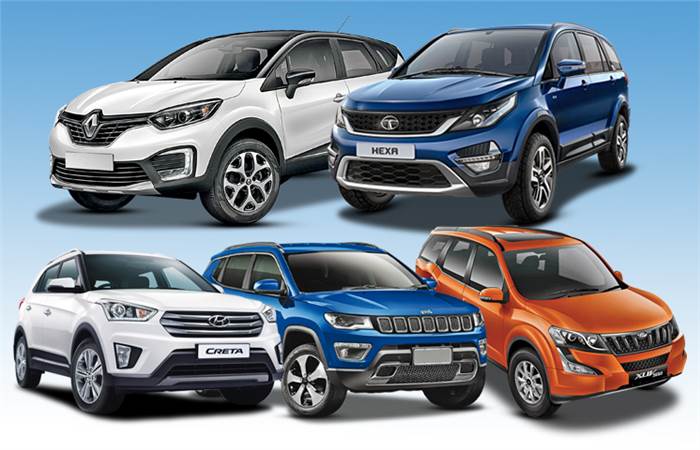
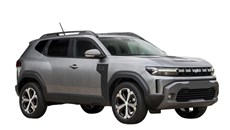
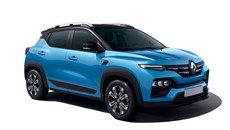
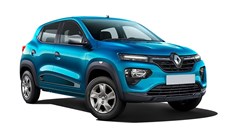
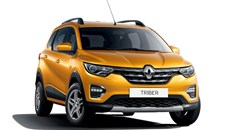
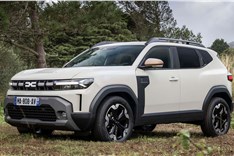

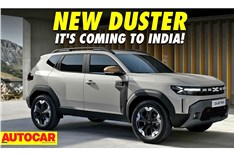

Comments
Member Login
Personal Details
No comments yet. Be the first to comment.